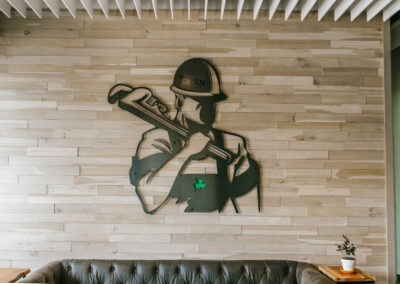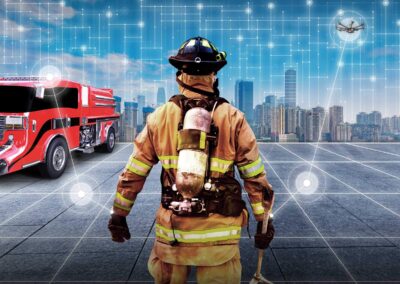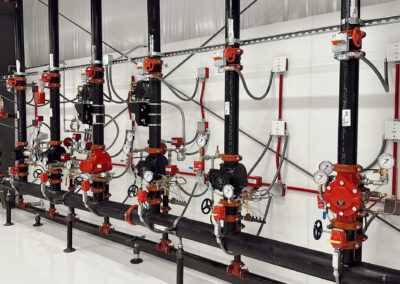The National Fire Protection Association’s standard for fire alarms is NFPA 72: National Fire Alarm and Signaling Code. NFPA 72 covers requirements for the installation, performance, testing, inspection, and maintenance of the fire alarm system. Although there are testing requirements that are normally conducted at the same time as the inspections, this article will cover only the inspection (visual) requirements. The inspection intervals vary depending on the equipment. Some items need to be inspected weekly, others monthly, quarterly, semi-annually, or annually. Most weekly or monthly inspections are handled in-house, while Ryan Fireprotection is called for more intensive annual inspections.
- All equipment must be checked to see if changes to the building, occupancy, environmental conditions, device locations, physical obstructions, device orientation, physical damage, and degree of cleanliness impact the equipment performance.
- If the fire alarm system includes Radiant Energy Fire Detectors and/or Video Image Smoke and Fire Detectors, it is verified that no point requiring detection is obstructed or outside the detectors’ field of view.
- If the system uses Supervisory Signal Devices and/or Waterflow Devices, their location and condition are checked.
- If the fire alarm is monitored, trouble signals are verified to operate normally.
- If the fire alarm uses nickel-cadmium or sealed lead-acid batteries, they are checked for corrosion or leakage, the tightness of the connections is checked, and the month/year of manufacture is reviewed.
- The location and condition of the following are verified:
- In-building fire emergency voice/alarm communication equipment
- Remote annunciator
- Transient suppressors
- Electromechanical releasing devices
- Fire extinguishing systems or suppression systems switches
- Manual fire alarm boxes
- Heat detectors
- Smoke detectors
- Combination Fire Extinguisher Electronic monitoring devices/systems
- Combination Carbon Monoxide detectors/systems
- Fire alarm control and emergency control function interfaces
- Guard’s tour equipment
- Notification appliances
- Exit marking audible notification appliances
- If the system uses Projected Beam Smoke Detectors, the beam path is verified to be unobstructed.
- If the system uses General Air Sampling devices, the cleanliness of all the in-line filters is checked.
- If the system uses General Duct Detectors, the detectors are checked to determine that they are rigidly mounted and there are no penetrations in the return air ducts in the vicinity of the detectors. It is also verified that the detectors were installed in proper locations.
- If the alarm system is monitored, the following are checked:
- Fuses
- Interface equipment
- Lamps and LEDs
- Primary (main) power supply
- The location, physical condition, and normal system condition are verified for Supervising Station Alarm transmitters (e.g., DACT, DART, McCulloh, RAT, etc.).
- For remote power supplies and notification appliance circuit power extenders, the proper fuse rating is verified and the lamps/LEDs are verified to indicate a normal operating status of the equipment.
- For systems with Duct detectors, the sampling tube is checked for proper orientation and that it protrudes into the duct in accordance with the system design.
- The location and condition of fiber-optic cable connections.
- The location and condition of area of Refuge two-way communication system.
NOTE: Unmonitored systems do not transmit signals alerting that there are potential system problems, so it is very important that all inspections and testing required by NFPA 72 are performed.
If the above list of fire alarm inspection requirements is unfamiliar to you, rest assured that the experts at Ryan Fireprotection have you covered. Contact Ryan Fireprotection to schedule an annual inspection and testing of your alarm system. Ryan Fireprotection professionals can also resolve any issues found during the inspections.


